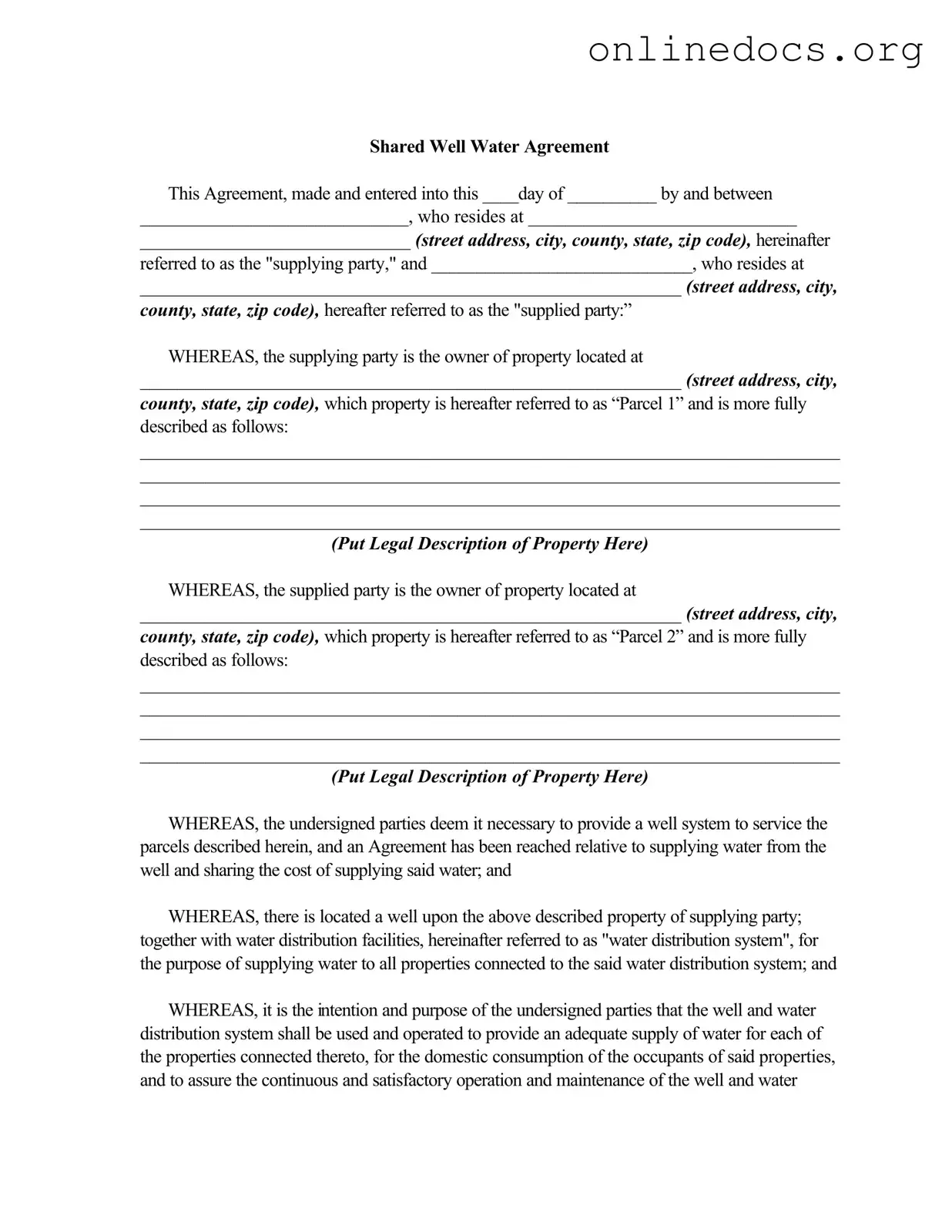The Shared Well Agreement is similar to a Water Rights Agreement. This document outlines the rights of individuals or entities to use water from a shared source. Like the Shared Well Agreement, it specifies the responsibilities of each party regarding maintenance and costs associated with the water supply. Both documents aim to ensure fair access to water while protecting the interests of all parties involved.
Another similar document is the Joint Use Agreement. This type of agreement allows multiple parties to share the use of a specific resource or property. In the case of the Shared Well Agreement, the resource is water from a well. Each party's rights and obligations are clearly defined, ensuring that all parties benefit from the shared resource without conflict.
The Cooperative Water Supply Agreement is also comparable. This agreement is typically formed between neighboring property owners to establish a shared water supply system. It details how water will be accessed, the costs of maintenance, and the procedures for addressing any issues that may arise. Like the Shared Well Agreement, it emphasizes collaboration and shared responsibility.
A Shared Easement Agreement is another relevant document. This agreement grants parties the right to access a portion of land for a specific purpose, such as maintaining a water system. Similar to the easements outlined in the Shared Well Agreement, it ensures that all parties have the necessary access to maintain the shared resource effectively.
The Community Well Agreement is akin to the Shared Well Agreement as well. This document typically involves a larger group of property owners who share a well. It outlines the terms for water usage, maintenance responsibilities, and cost-sharing, similar to the provisions found in the Shared Well Agreement.
The Water Supply Agreement is also similar. This document formalizes the terms under which one party supplies water to another. It includes details about the quality of water, payment terms, and maintenance obligations, paralleling the structure and intent of the Shared Well Agreement.
A Utility Service Agreement can be compared to the Shared Well Agreement as well. This agreement outlines the terms under which utility services, including water, are provided to multiple parties. It specifies rates, responsibilities for maintenance, and procedures for dispute resolution, which are also key components of the Shared Well Agreement.
The Maintenance Agreement for Shared Facilities is another relevant document. This agreement focuses on the upkeep of shared infrastructure, including water systems. It establishes the responsibilities of each party for maintenance and repairs, mirroring the maintenance obligations found in the Shared Well Agreement.
When engaging in transactions involving property, it is essential to have proper documentation, like a Bill of Sale, which can be found at legalformspdf.com. This form not only protects the interests of both buyers and sellers but also ensures that the transfer of ownership is recorded accurately, safeguarding against potential disputes in the future.
Lastly, the Partnership Agreement can be likened to the Shared Well Agreement. This document outlines the terms of collaboration between parties, including shared resources and responsibilities. Both agreements emphasize the importance of cooperation and clearly defined roles to ensure the successful management of shared resources.
